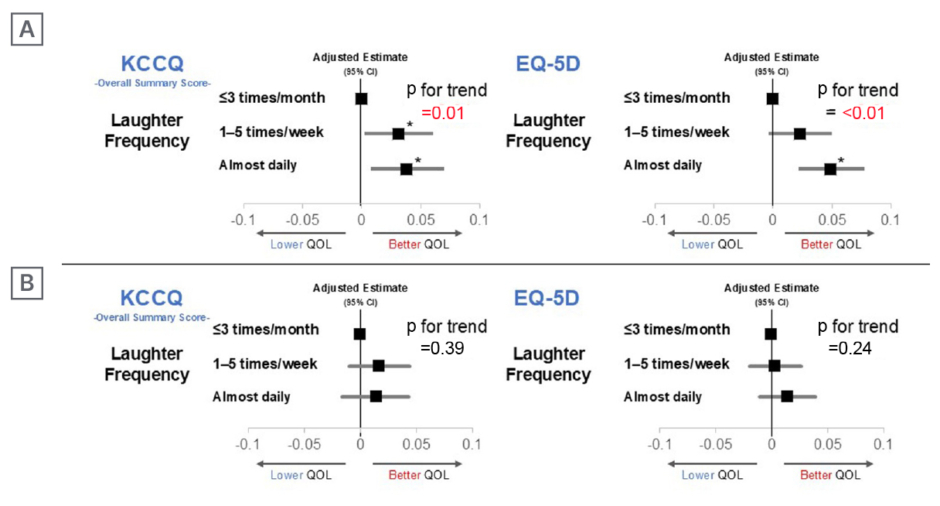BACKGROUND AND AIMS
Negative emotions, particularly depression, are known to increase cardiovascular disease risk and reduce quality of life (QOL). By contrast, positive emotions such as laughter may have beneficial effects on vascular function and psychological well-being. Epidemiological and experimental studies have suggested that frequent laughter may reduce stress hormone levels, improve endothelial function, and promote healthy behaviours.1-5 However, the relationship between laughter frequency, cardiovascular risk, and QOL has not been comprehensively examined in stable cardiac populations. This cross-sectional study investigated these associations in asymptomatic patients attending a cardiology outpatient clinic.6
METHODS
A survey of asymptomatic patients attending a cardiology outpatient clinic between April 2023–March 2024 was performed. Patients with a clinical frailty scale score of ≥3, a history of hospitalisation, or an inability to complete the questionnaire were excluded. Laughter frequency was assessed using a three-point scale (almost daily, 1–5 times a week, and 1–3 times a month). The relationship between laughter frequency and cardiovascular event risk (assessed using the Suita score as a surrogate marker), along with QOL measures (Kansas City Cardiomyopathy Questionnaire [KCCW] overall summary score and EuroQol-5 Dimension [EQ-5D]) were analysed.
RESULTS
Overall, 611 patients (median age: 71 years; 65% male) were included. Laughter frequency was significantly higher in women than in men (daily laughter: 41% versus 28%; p<0.01). Although no significant association was found between laughter frequency and cardiovascular event risk, a higher laughter frequency was positively associated with both QOL measures. After adjusting for age, sex, grip strength, B-type natriuretic peptide, Meta-analysis Global Group in Chronic Heart Failure (MAGGIC) score, smoking, exercise habits, gardening habits, pet ownership, and bathing habits, the association with improved QOL remained significant (Figure 1A). However, the strength of this association was attenuated after further adjustment for the depression indicator (Patient Health Questionnaire-2 [PHQ-2] score; Figure 1B).

Figure 1: Multivariable analysis of laughter frequency and quality of life (Kansas City Cardiomyopathy Questionnaire and EuroQol-5 Dimension).
*p<0.05; p for trend indicates the significance of trends across laughter frequency categories.
A) Adjusted for age, sex, grip strength, BNP, MAGGIC score, smoking, exercise habits, gardening habits, pet ownership, and bathing habits. B) A+adjustment for PHQ-2 (depression indicator).
BNP: B-type natriuretic peptide; EQ-5D: EuroQol-5 Dimension; KCCQ: Kansas City Cardiomyopathy Questionnaire; MAGGIC: Meta-analysis Global Group in Chronic Heart Failure; PHQ-2: Patient Health Questionnaire-2; QOL: quality of life.
CONCLUSION
The self-reported frequency of laughter was not associated with cardiovascular event risk, but showed a positive association with QOL. This association was attenuated after accounting for depression, which signifies partial mediation by mental health factors. Promoting laughter may serve as a simple, nonpharmacological approach to improve the QOL of patients with asymptomatic cardiac conditions, particularly through its effect on mental well-being.







